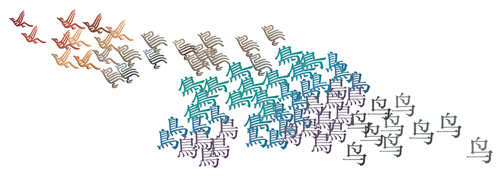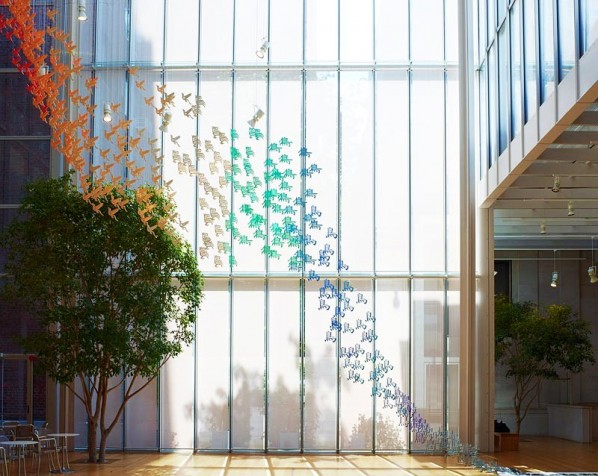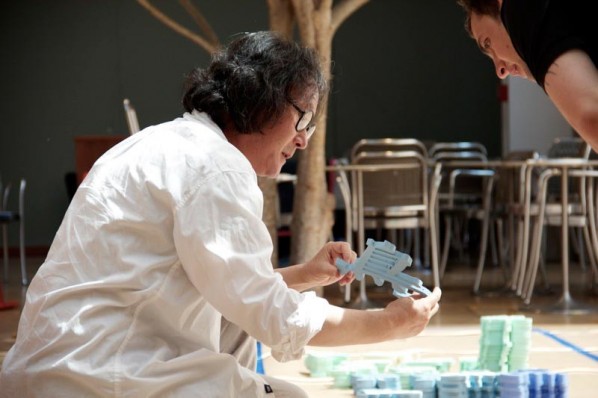
Xu Bing's Working at The Living Word 3
Among the elites of China’s New Wave artists, Xu Bing has concentrated on the reflections of language and the nature of calligraphy since the mid of 1980s. As a library and museum which particularly fits his creation, the Morgan invites Xu Bing to present his spectacular installation, The Living Word, a poetic evocation of the relationship between the written word and its meaning in the Morgan's Gilbert Court. The piece consists of some 350 carved and painted Chinese characters for the word "bird" in various historical scripts—all hung from the ceiling of the Morgan's soaring court in a cloudlike cluster that will rise dramatically from the floor to the top of a 50-foot high glass wall. Xu’s installation, The Living Word starts on July?20 and the finished piece will be on view through October 2.
My work and my method of thinking have been my search for the living word.
?????????????????????????????????????????????????????????????????????????????????????? --Xu Bing

Xu Bing's Drawing
"In The Living Word," Xu Bing explained, "the dictionary definition of niao (bird) is written on the gallery floor in the simplified text created by Mao. The niao characters then break away from the confines of the literal definition and take flight through the installation space. As they rise into the air, the characters gradually change from the simplified text to standardized Chinese text and finally to the ancient Chinese pictograph for 'bird.' The characters are rainbow colored to create a magical, fairy-tale quality."

Xu Bing's The Living Word
?The elegance of the shimmering characters that gradually metamorphose into birds as they ascend masks the subversive nature of the work. While the modern, simplified Chinese characters are fixed to the floor, their form and meaning set, earlier forms of scripts embody an increasing sense of freedom as one moves back in time, from traditional calligraphy to the original pictographs based on images of nature. Xu Bing said that he chose the bird to suggest "escaping the confines of human written definition." According to Xu Bing's explanation, the title of the installation alludes to the Buddhist inspiration, "if you look for harmony in the living word, then you will be able to reach Buddha; if you look for harmony in lifeless sentences, you will be unable to save yourself . . . My work and my method of thinking have been my search for the living word."

Xu Bing's at Work
Xu Bing created the first version of The Living Word in 2001 for an exhibition at the Smithsonian Institution's Arthur M. Sackler Gallery in Washington, DC. In a second version, a year later, he replaced the Chinese characters with the English dictionary definition for "bird." At the Morgan, Xu Bing designed a third version specifically for the soaring space of Renzo Piano's Gilbert Court. Using Chinese language, The Living Word 3 includes more and larger characters than the previous two versions. A selection of Xu Bing's preparatory drawings for this installation is also on view.
Mr. Xu remains best-known for conceptual works dealing with written texts, often highlighting their unreliability. "He takes a somewhat critical position vis-à-vis the authority of the written word, which you could say for a library is a little ironic," said Isabelle Dervaux, the Morgan's curator of modern and contemporary drawings. "The Living Word" has been shown in the city only once before, when a version sold for $408,000 (a record for the artist) in a landmark sale of contemporary Chinese art at Sotheby's in 2006.




























